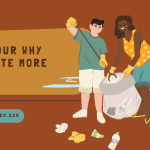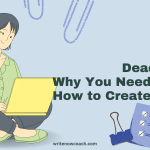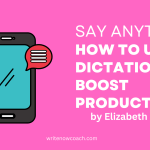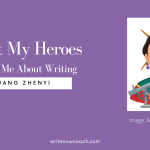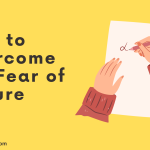The Big Idea Book by Rochelle Melander
Ideas are the beginning points of all fortunes. —Napolean Hill
You know you’ve stumbled on a big idea book when you think, “I wish I had thought of that!” A big idea book uses evidence and stories to present a simple and concrete idea. If an idea book is done well, it will generate buzz in the media and around the water cooler.
What it looks like. Idea books can be structured in many ways. The following characteristics set apart an idea book from other books:
+The central idea can be articulated in a single sentence.
+The purpose of the book is to present a single important idea in a compelling way versus teaching you how to incorporate the idea into your life. While the book may include action steps, it is not a how-to book.
+The pieces of the book—chapters, paragraphs, exercises, call outs, and sidebars— support or prove the main idea.
Here are three examples of idea books:
In The Power of Habit: Why We Do What We Do In Life And Business, Charles Duhigg takes the simple idea of a habit loop—Cue, Practice, Reward—and expands it into a three-part, more than 350-page book. In part one, “The Habits of Individuals,” Duhigg explains the idea and presents supporting information, research, stories and visual diagrams. In parts two and three, Duhigg explores how the same big idea—the habit loop—applies to both organizations and societies. Finally, Duhigg includes a short appendix to help readers apply the ideas in their lives (even though he admits that the book is not designed to be prescriptive).
In Purple Cow: Transform Your Business By Being Remarkable, Seth Godin presents the idea that in order to succeed in business (or publishing) you need to be remarkable, something that people will notice like a purple cow in the midst of hundreds of brown cows. The book is a collection of essays, case studies, and action steps that help the reader understand what a purple cow might look like in business and how to become one.
And here’s a book that feels like a big idea book to me but is more difficult to classify. One Small Step Can Change Your Life: The Kaizen Way by Robert Maurer has all the markers of a how-to book—it teaches readers how to apply specific practices to change their lives. But at its core, One Small Step is a big idea book. Maurer teaches a simple, concrete idea, easily articulated in the title: one small step can change your life. He explains the concept in the preface and chapter one. Each of the following chapters demonstrates a different way to apply the small step method including asking small questions, thinking small thoughts, and solving small problems.
Is your book idea right for a big idea book? Another big idea book, Made to Stick: Why Some Ideas Survive and Others Die by Chip Heath and Dan Heath, provides the perfect measuring tools for testing our big idea. The authors present six elements of a good idea: simple, unexpected, concrete, credible, emotions, and stories. We can use their ideas to measure the value of our own ideas. Let’s use their six elements of a great idea to analyze the big idea book, The Power of Habit by Charles Duhigg.
Simple. The idea can be expressed in a single sentence that anyone can understand. On the book jacket of The Power of Habit, the text shares three success stories and then this nugget: “They succeeded by transforming habits.” That’s the simple, powerful idea in this book: when we transform a habit, we can transform a life or a corporation.
Unexpected. The idea changes how we see the subject. In The Power of Habit, the stuff we do every day—brushing our teeth or eating that bag of chips—influences everything else we do. Tweaking a small habit might transform our lives.
Concrete. The idea is expressed in tangible, concrete language that we can apply to real life. In The Power of Habit, the explanation of the habit loop—cue, practice, reward—can be easily applied to real life events. My morning exercise routine: Cue (take daughter to bus, head to gym), Practice (exercise), Reward (social time with gym acquaintances).
Credible. The idea is supported by research and/or anecdotal information. Duhigg’s book is filled with research studies and references to how these ideas have helped individuals and companies succeed.
Emotions and Stories. Writers often express the emotion of a great idea through storytelling. In The Power of Habit, Duhigg communicates his big idea by telling stories about how individuals, companies, and communities used the power of habit to become successful. His stories of real people quitting smoking, running marathons, and transforming businesses sell the idea of the book better than any of the research he presents.
How to test market your big idea book. So here’s the scary thing about big idea books: they are built on a slim foundation, a single idea. Writers are protective of their ideas and rightly so—for nonfiction writers, our businesses are built on our ability to package and sell our ideas. And, we cannot copyright our ideas. What does fall under the protection of copyright law is how we articulate our ideas. When we write an article or even a blog post about our big idea, the way we express it belongs to us. So, by writing and publishing our ideas, we create a written record of our work and we get an opportunity to see how the market responds to our ideas.
If you’re thinking about a big idea book, test market it as an article for a print magazine or your blog. See what kinds of comments you get on your article. You’ll know you have hit on an idea for a big idea book if:
*your idea gets people talking (they comment a lot, share your thoughts with others, and write about the idea themselves)
*readers seek more information about the idea in the form of research or anecdotal evidence
*potential clients and colleagues invite you to talk more about your ideas, either informally in sessions and over coffee or as a guest speaker.
How to find that big idea! I’ve noticed that the people who write the great idea books are people who handle ideas on a daily basis. They think big ideas, read about big ideas, and talk to their friends about them. They consider so many ideas that they are bound to find at least one perfect, sellable idea in their lifetime (if not more)!
If you love ideas, then you probably play with ideas every single day. As Lewis Carroll said, “Sometimes I’ve believed as many as six impossible things before breakfast.” You were made for the idea book. But if you are reading this and thinking, “Yikes, sounds like a lot of work!”—then this might not be the type of book for you.
Your turn: What’s your favorite big idea book?



